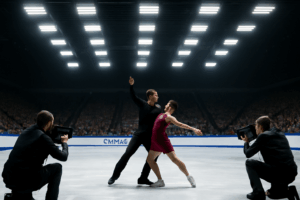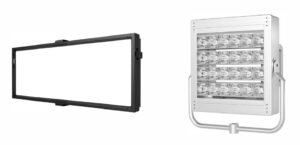In cinema, capturing motion has always been at the heart of visual storytelling. From the early days of 16fps silent film to today’s ultra-high frame rate footage, filmmakers have continually sought to push the boundaries of what the camera can perceive. Whether it’s the subtle flutter of butterfly wings or the explosive chaos of a demolition captured in slow motion, these sequences mesmerize audiences and amplify emotional intensity.
One of the least recognized, yet most vital components of successful high-speed cinematography is lighting. Without the right lighting system, even the most advanced camera will fall short in capturing crisp, detailed slow-motion footage. Traditional lighting technologies struggle with the demands of high frame rates, introducing flicker and intensity loss. High-speed LED lighting has emerged as the transformative solution, providing the precision, power, and performance filmmakers need to master motion.
Motion in film is an illusion created by rapidly displaying sequential images. As frame rates increase to capture more detail—typically 240fps, 480fps, 1000fps, or beyond—the lighting demands increase exponentially. For each frame to be properly exposed, the camera’s shutter is open for only a fraction of a second. This shortened exposure time requires a higher light intensity to maintain image brightness.
Additionally, not all lighting sources emit a continuous stream of light. Many traditional lights, including certain fluorescents, HMIs, and low-quality LEDs, pulse with the electrical current. While this flicker is imperceptible to the human eye, it becomes painfully obvious at high frame rates, often resulting in unusable footage.
To overcome this, high-speed cinematography requires lighting solutions that deliver:
This is where advanced LED systems come into play.
LED lighting has rapidly progressed over the past decade, evolving from low-power panel lights into powerhouse systems capable of replacing HMIs and tungsten fixtures even in demanding conditions. A key milestone has been the development of flicker-free, high-speed-compatible LED systems.
Unlike gas-discharge lamps, LEDs can emit a stable and continuous stream of photons, driven by sophisticated circuitry. Advanced LED lights can now operate with a pulse-width modulation (PWM) frequency exceeding 100,000 Hz, making them virtually immune to flicker even at extremely high frame rates.
In addition, modern LEDs feature:
Manufacturers have optimized driver technology, thermal management systems, and optical diffusers to ensure high efficiency and consistent performance under studio or field conditions. These advancements make high-speed LED lighting the definitive tool for cinematic motion work.
In high-speed filming, even a few milliseconds can define the difference between clarity and blur. LED lighting provides cinematographers with the level of control needed for this exacting work. Key advantages include:
Consistent Brightness and Frame-Accurate Output
High-speed LEDs maintain their luminous flux across every frame, ensuring that brightness doesn’t dip due to power fluctuations or thermal degradation. This consistency is critical in frame-by-frame analysis or scientific filming applications.
Creative Control with RGB+White Systems
LED systems now often feature full-spectrum color tuning. This allows filmmakers to simulate a variety of ambient conditions, stylize motion effects, and experiment with surrealistic hues—all while maintaining high frame-rate compatibility.
Examples from the Field
In all these cases, LED lighting doesn’t just illuminate the subject—it defines the aesthetic of motion itself.
To master motion capture, high-speed LEDs incorporate several essential design elements:
Top-tier LED systems operate with refresh rates up to 100kHz, eliminating flicker even at 10,000 fps. These drivers use advanced PWM or constant current control methods.
Extended takes under high-power conditions can cause thermal buildup. LED fixtures must include heat sinks, fans, or liquid cooling systems to preserve light output and component longevity.
Sophisticated optical lenses, barn doors, and diffusers allow operators to direct and shape light exactly where it’s needed. Clean edges, soft transitions, and minimized spill are critical in high-frame-rate close-ups.
For slow-motion color work, spectrum consistency across dimming levels ensures that color doesn’t shift as intensity changes—crucial for VFX integration and post-production grading.
High-speed LED lighting is now common in both indoor and outdoor environments.
Controlled Environments
On green-screen stages and controlled sets:
Field Environments
In unpredictable outdoor settings:
These features give DPs and gaffers unmatched flexibility in illuminating motion under real-world constraints.
Case 1: Explosive Commercial Shoot at 2500 fps
In a high-profile soft drink commercial, a can was opened at 2500 fps using a Phantom Flex 4K. A bank of 5000W LED panels with a 120° beam angle provided the necessary 1000 lux at 3 meters. The flicker-free performance ensured perfect clarity in every drop of mist.
Case 2: Cinematic Sword Fight in Stylized Slow Motion
A historical drama used RGBWW LED panels to simulate flickering torchlight while filming a duel at 1000 fps. The DMX-synchronized LED rigs changed color temperature dynamically, creating dramatic shifts in tone that were captured seamlessly in post.
Technical Insights
These case studies exemplify how high-speed LED lighting enables directors and DPs to visualize time itself as a cinematic element.
While traditional lighting sources still have a place in some productions, they present limitations in high-speed contexts:
| Feature | High-Speed LED | HMI | Tungsten |
| Flicker-Free | ✅ | ❌ (unless filtered) | ❌ |
| Instant Start-Up | ✅ | ❌ (warm-up needed) | ✅ |
| Dimming Control | ✅ (smooth, color stable) | ⚠️ (limited, color shift) | ✅ (but hot) |
| Color Tunability | ✅ RGB+White | ❌ | ❌ |
| Portability | ✅ (lightweight, battery) | ⚠️ | ❌ |
| Power Consumption | Low (150 lm/W) | High | Very High |
| Heat Output | Low | Moderate | High |
High-speed LEDs provide the safest, most energy-efficient, and adaptable option for motion-focused production.
The unique properties of LED lights create new artistic tools for filmmakers:
In these ways, high-speed LED lighting becomes a creative partner, not just a technical necessity.
As imaging technology evolves, so too must the lighting:
Next-generation LED drivers will exceed 200kHz PWM for seamless compatibility with ultra-high frame rate sensors used in science and VFX.
AI-driven lighting controllers will adjust brightness, color, and angle in real time based on subject motion and scene analysis.
Fixtures will become more modular, allowing studios to build scalable systems that self-configure via wireless mesh networks.
More LED manufacturers are adopting low-impact materials, recyclable casings, and solar-compatible battery packs.
These innovations will help productions remain agile, eco-conscious, and technologically advanced.
In the world of cinematic visuals, motion is not merely movement—it is meaning. Every flutter, fall, and flicker tells a story. High-speed LED lighting has revolutionized how filmmakers sculpt motion, making the once-impossible now accessible, affordable, and artistically liberating.
As the demand for high-frame-rate footage increases in cinema, advertising, sports, and streaming content, LED technology stands at the forefront of this transformation. Filmmakers who embrace high-speed LED lighting aren’t just improving their visuals—they’re unlocking entirely new dimensions of storytelling.
The tools are ready. The technology is proven. The motion is yours to master.
–The End–
Get in touch for free lighting customization